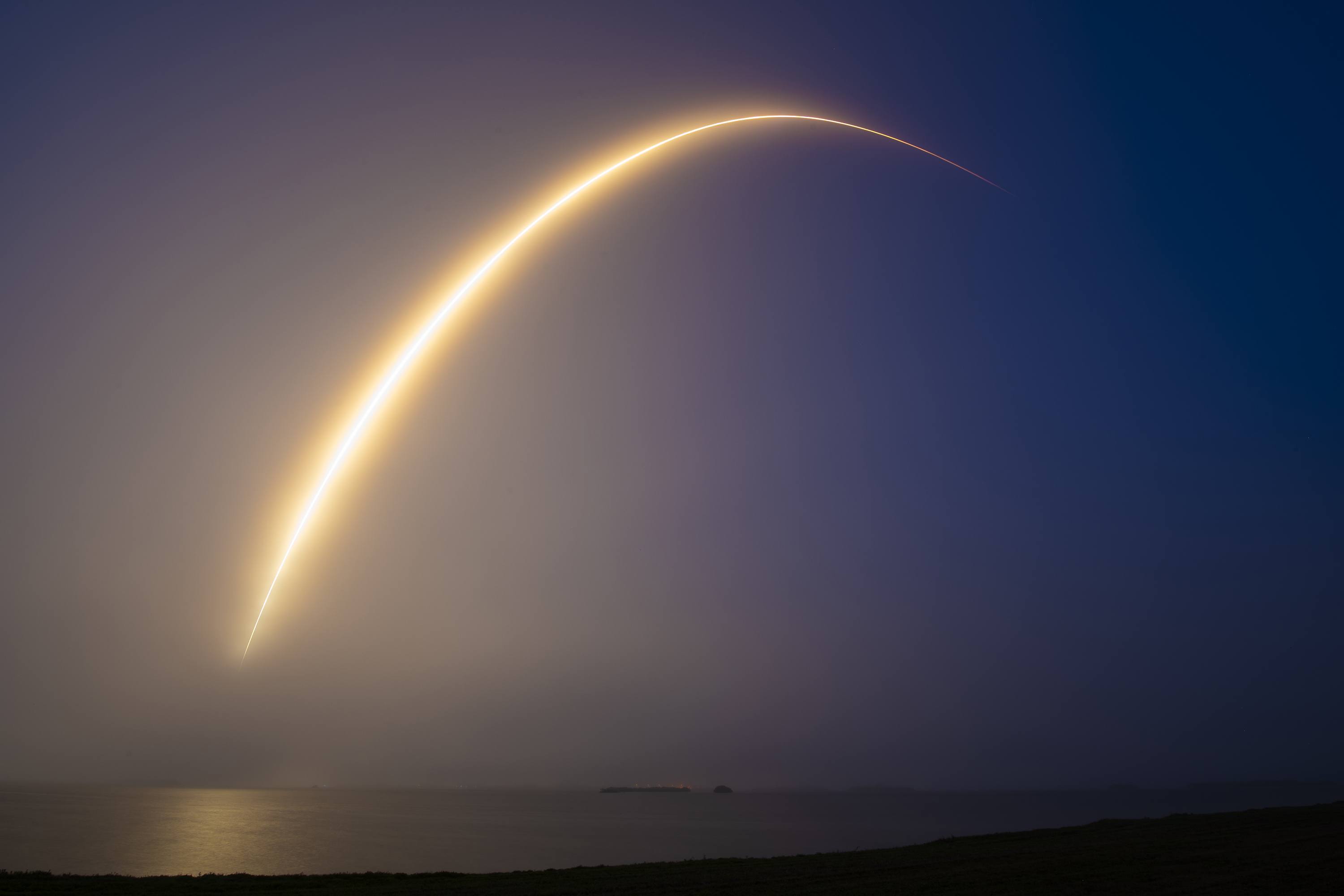
This comes a day after four astronauts began their journey to the International Space Station aboard the Falcon 9 as part of the NASA Crew-8 mission yesterday.
Elon Musk’s SpaceX has confirmed the deployment of a fresh batch of Starlink satellites into the lower-Earth orbit to bring high-speed internet to all corners of the globe.
In a post on X earlier today (5 March), the spacecraft manufacturer wrote that the latest launch of 23 Starlink satellites brings it to above 10,000 operational space lasers for the constellation, which enable them to provide “truly global coverage” and serve those in the most remote locations on Earth.
Deployment of @Starlink satellites confirmed. This mission brings us above 10,000 operational space lasers for the constellation, which enable satellites to provide truly global coverage and serve those in the most remote locations on Earth
— SpaceX (@SpaceX) March 5, 2024
The satellite launch was the third of three Falcon 9 launches within 20 hours between last night and earlier today. The first two carried to orbit four crew members headed to the International Space Station (ISS) and 53 rideshare spacecraft.
Falcon 9 is a class of rockets developed by SpaceX that also helps national space agencies launch their own missions.
The latest Starlink news comes a day after the four astronauts – Matthew Dominick, Michael Barratt, Jeanette Epps and Alexander Grebenkin – began their journey to the ISS aboard the Falcon 9 as part of the NASA Crew-8 mission to conduct a science expedition aboard the orbital laboratory.
“On this eighth crew rotation mission, we are once again showing the strength of our commercial partnerships and American ingenuity that will propel us further in the cosmos,” said NASA administrator Bill Nelson said earlier this week.
“Aboard the station, the crew will conduct more than 200 science experiments and technology demonstrations to help fuel this new era of space exploration and benefit humanity here on Earth.”
Three Falcon 9 launches in 20 hours, carrying to orbit:
– 4 crewmembers headed to the @Space_Station
– 53 rideshare spacecraft
– 23 @Starlink satellites pic.twitter.com/KtBlMrwLDv— SpaceX (@SpaceX) March 5, 2024
Some of the planned experiments include using stem cells to create organoid models to study degenerative diseases, studying the effects of microgravity and UV radiation on plants and testing whether wearing pressure cuffs on the legs could prevent fluid shifts and reduce health problems in astronauts.
The latest batch of Starlink satellites add to Musk’s rapidly growing presence in the space sector – with no worthy competitor in sight. Even though the idea of making high-speed internet more accessible even in the most remote parts of the world seems noble, there are many concerns around how quickly Starlink is taking over the skies.
For one, sudden bright lights beaming across the night sky has been confusing many. But less innocuous consequences of Starlink’s ubiquitous presence above the clouds are increased chances of collisions, interference with other scientific missions, the dangers of satellite’s re-entering the Earth’s atmosphere and the growing incidents of space debris.
Find out how emerging tech trends are transforming tomorrow with our new podcast, Future Human: The Series. Listen now on Spotify, on Apple or wherever you get your podcasts.

